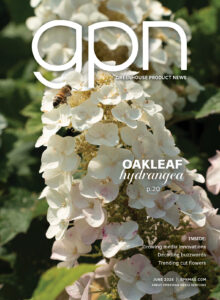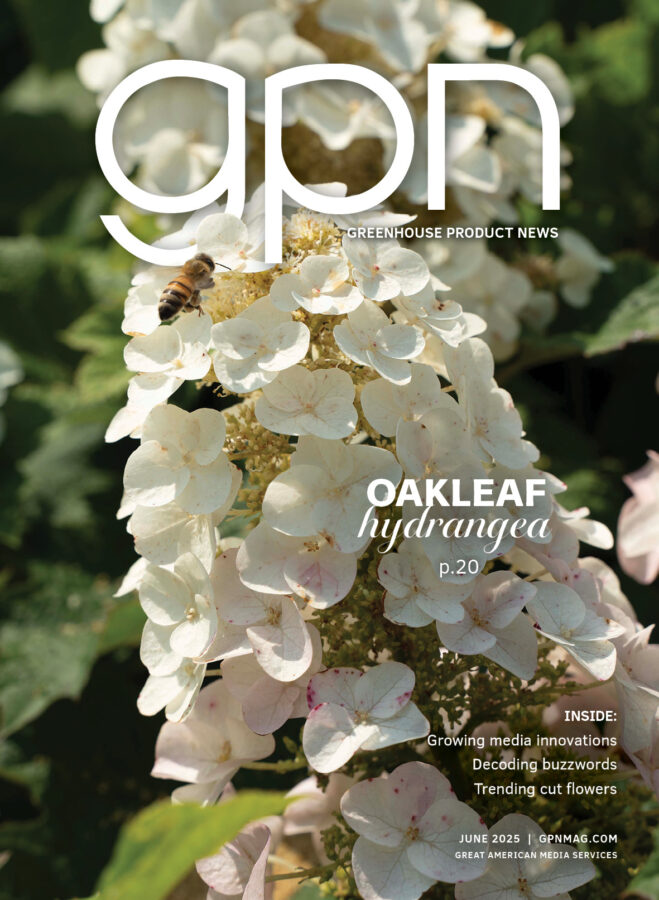Perennial Solutions: Lavandula x intermedia ‘Phenomenal’
By definition, the word “phenomenal” refers to something that is very remarkable or extraordinary. In the past, there have been instances where the cultivar names of certain plants fell short or have not always been representative of the plant’s true attributes or performance. With a strong, suggestive designation, does Lavandula x intermedia ‘Phenomenal’ live up to its name? Absolutely!
When this sport was discovered by Lloyd and Candy Traven of Peace Tree Farm in Pennsylvania, Lloyd described it as “an electrifying moment.” Since its discovery, Peace Tree Farm advocates that they have never seen a lavender as excellent a performer as ‘Phenomenal’. With its attributes and strong garden performance, ‘Phenomenal’ was named a Must-Grow Perennial for 2013 by Better Homes & Gardens.
‘Phenomenal’ is an interspecific intermedia type lavender with a mounding shape, uniform growth, and prolific flowering. One of its greatest attributes is the foliage does not die back from the base of the plant as is often observed with other hardy lavenders; instead the foliage remains thick and full throughout the plant. It also branches strongly and evenly, providing a full appearance.
‘Phenomenal’ has outstanding garden performance and grows well in sunny locations throughout USDA Hardiness Zones 5 to 8. It has shown tolerance to extreme heat and humidity. Lavender prefers locations with average to slightly dry soils and does not tolerate wet soils. At maturity, ‘Phenomenal’ reaches 24 to 32 inches tall by 24 to 32 inches wide. In mid June, it produces an elegant display of fragrant, purple-blue flower spikes above the silvery mounds.
Lavandula ‘Phenomenal’ is well suited for greenhouse and nursery production and with its extraordinary uniformity is suitable for businesses looking to bench run their crops. Lavenders can be used in containers, as border and mass plantings, as cut or dried flowers or for its oils. It is also resistant to critter feeding and is drought tolerant once established.
Propagation
Lavandula x intermedia ‘Phenomenal’ is vegetatively propagated from tip cuttings. The best results are obtained when using vegetative tip cuttings that are not woody or blooming when they are harvested. The cuttings should be 1 to 2 inches long. Stick the cuttings into a pre-moistened media. Rooting compounds are not necessary; however, spraying the cuttings with 1,000-ppm IBA soluble salts within 24 hours of sticking will improve the uniformity of rooting and decrease rooting times.
For the first few days of propagation, provide a low to medium misting frequency. Gradually decrease the mist throughout propagation. Too much misting leads to poor root initiation and rotting of the foliage. Conversely, do not allow the cuttings to dry out or they may not bounce back. The key is to propagate them with the least amount of misting possible. The most common mistake growers typically make when propagating lavender is providing too much mist.
At seven to 10 days after sticking, it is beneficial to apply water soluble fertilizers using 100-ppm nitrogen at each irrigation. Continue to reduce the amount of misting as the cuttings form callus and begin to root. Once the cuttings appear to tolerate the daily stresses in propagation, the misting is no longer required (usually 12 to 16 days after sticking). Lavender usually takes two to three weeks with soil temperatures ranging from 68 to 72° F to root. Liners take approximately six to eight weeks from sticking to become fully rooted and ready for transplanting.
Production
For container production, ‘Phenomenal’ is suitable for 1-quart to 1-gallon pots with a single liner planted in the center of the pot. When planting, the growing medium should be even with the top of the liner. Lavender performs best when grown in a porous, well drained medium with a slightly acidic pH: 5.8 to 6.2.
To promote branching, it is recommended to pinch the plants one time. It is very important to not pinch and plant them simultaneously. Rather, pinching the plants either a couple of weeks before transplanting or a couple of weeks after they are potted will reduce plant stress and improve performance.
They require an average to slightly below average amount of irrigation as they do not tolerate very wet or overly dry conditions. When wet conditions persist for extended periods, lavenders are very susceptible to root rots. When irrigation is necessary, water them thoroughly then allow the soil to dry slightly between waterings.
Lavandula are considered to be light feeders. Nutrients are commonly delivered using water-soluble sources, providing 75- to 100-ppm nitrogen using a constant liquid fertilizer program or 150 ppm as needed. Controlled-release fertilizers can be used to deliver nutrients by incorporating 0.75 to 1.0 pound of elemental nitrogen per cubic yard of growing mix prior to potting.
If growth control is necessary, several plant growth regulators are effective at reducing stem elongation of lavenders. Foliar sprays of 5-ppm uniconazole (Concise or Sumagic), 2,500-ppm daminozide (B-Nine or Dazide), or 30-ppm paclobutrazol (Bonzi, Paczol or Piccolo) can be applied. One or two applications applied seven days apart should provide sufficient control.
Insects and Diseases
‘Phenomenal’ appears to be less susceptible to insects and diseases than many of the lavender cultivars currently being grown. Watch for aphids, whiteflies, Botrytis, Phytopthora and Pythium during production. Growers should utilize routine scouting programs to detect the presence of pests and diseases early and to determine if and when control strategies are necessary.
Scheduling
With its attractive silvery leaves, ‘Phenomenal’ can be marketed with or without bloom. When transplanting from 72-cell plugs, it will take six to nine weeks to produce non-flowering 1-gallon containers of marketable size.
To improve marketability, many growers produce and sell flowering lavender for mid spring and early summer sales. To obtain consistent and uniform blooming, ‘Phenomenal’ does require vernalization. Provide a cold treatment of six to 10 weeks with temperatures of 37 to 50° F. For large container sizes, it is best to bulk the plants up in the final container prior to vernalizing them. When growing small container sizes (4-inch), the cold treatment can be provided in the final container or the liners can be vernalized and transplanted in the late winter or early spring.
Following vernalization, they will flower under short day lengths; however, flowering is more uniform and consistent when they are grown under long days. When the days are naturally short (less than 14 hours), provide long day lengths by extending the day or providing a four-hour night interruption during the middle of the night using photoperiodic lighting. From the onset of long days, the plants will bloom in eight to 10 weeks when they are grown at 60 to 65° F.
Availability
Contact Cultivaris (www.cultivaris.com/sources) for availability of unrooted cuttings and young plants. Unrooted cuttings are available from HMA Plants (www.hmaplants.com), Fides Oro and other sources. Rooted liners can be obtained from Peace Tree Farm (www.peacetreefarm.com), James Greenhouses (www.jamesgreenhouses.com), North Creek Nurseries (www.northcreeknurseries.com), Pacific Plug & Liner (www.ppandl.com), Plug Connection (www.plugconnection.com) and Skagit Gardens (www.skagitgardens.com), as well as new licensees across North America, Europe and other continents.









 Video Library
Video Library 


















